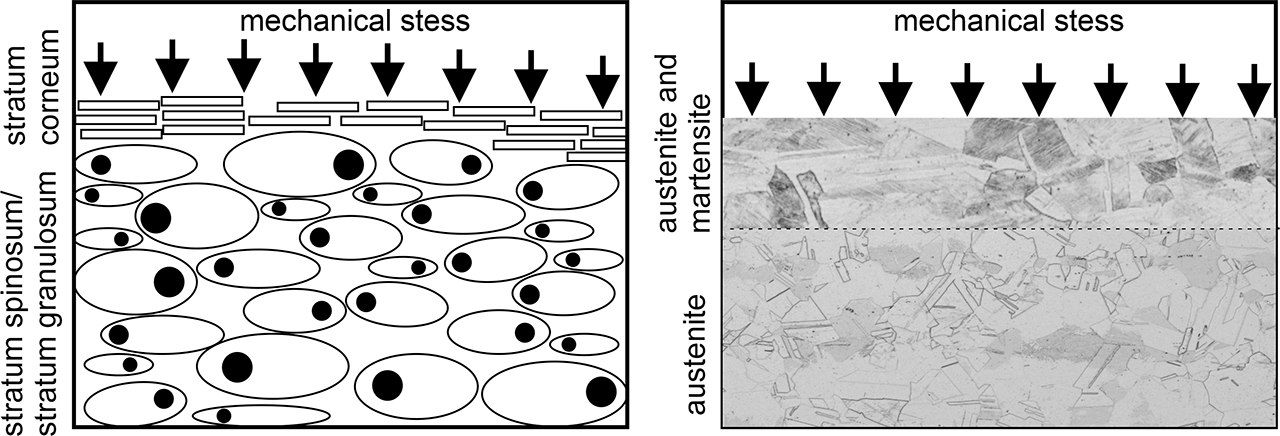Adaptive metal coatings based on the principle of biological modification (ADAMAS)

Project aim
Within the project, the material-inherent self-healing mechanism of a phase transformation is to be exploited. In analogy to callus formation as a result of pressure and friction, a coating of metastable austenitic steel 1.4301 produced by laser powder cladding (LPA) reacts locally to environmental influences (plastic deformation). This effect is realized by the tendency of 1.4301 to deformation-induced martensite transformation – also known as TRIP (transformation-induced-plasticity) effect.
A key challenge is to ensure that the coating possibly solidifies with austenite as a single-phase. However, laser cladding is characterized by comparatively small melting volumes and the associated high cooling rates. This involves the risk of δ-ferrite formation, which does not transform into martensite under plastic deformation. Therefore, the laser cladding process must be adapted in such a way that the generated layer solidifies in a single-phase austenitic manner. Based on this, the aim is to clarify whether the coatings of laser cladded 1.4301 are superior to established coating materials, when exposed to mechanical and corrosive loads, due to the self-healing effect to be expected and if they have an equivalent or improved corrosion and wear resistance. The overall aim is to offer an environmentally and health-friendly alternative to the established Ni-, Co- and Cr-based coatings, especially hard chrome.
Work plan
Various parameter variations are systematically tested by laser cladding processes in order to achieve the goal of the single-phase austenitic initial state after coating solidification. The microstructure is characterized by metallographic investigations. Samples of all materials are mechanically stressed in order to subsequently investigate the influence of the mechanical loading on the self-healing effect by means of martensitic transformation and on the wear and corrosion behavior of the coatings.
 Fraunhofer Institute for Material and Beam Technology IWS
Fraunhofer Institute for Material and Beam Technology IWS